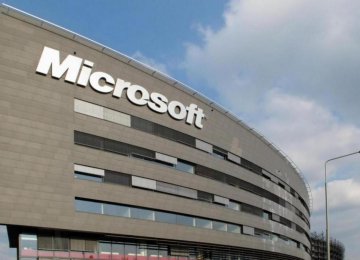Iran’s social media has been falling over itself in the past week over reports about Microsoft’s quiet but real entry into the Iranian technology sector.
The twitter account for Shargh newspaper’s Sobhan Hassanvand was first to clock the American giant as having a base in Iran on Monday night (Dec. 15). Hassanvand showed a picture of a building on Bucharest Avenue in central Tehran with a giant Microsoft sticker on the window, with the quote “@Microsoft office in #Iran.”
But is this really Microsoft entering the Iranian market?
Well, not exactly.
After having bought Nokia’s mobile division in 2014, Microsoft was left with many things, including Nokia’s former dominant role in Iran’s mobile phone market.
It turns out that Microsoft did inherit Nokia’s local distributor, formally called Irnokia and now Iretel, the company has been established in Iran for well over a decade, and has held the contract on Nokia’s aftercare service; however, what looked like a lose-lose situation for both Nokia and Ir-Nokia now looks like a win-win for Microsoft and Iretel.
Microsoft has a surprisingly strong fan base in the Iranian market, websites such as winphone.ir and onedigital.com are big forums for Windows enthusiasts. The latter has been the country’s only online Windows phone store so far. Microsoft also has a long history of working with Iranian technologists in Silicon Valley, case in point would be Roxanne Varza, Microsoft’s Iranian-American startup business director. So, Iranian partnership is an established business tactic for the Redmond giant.
In October, Motherboard news – a tech news website said a recent Microsoft feedback questionnaire showed there’s huge demand for the company’s services in Iran.
Users voted over 30,000 times for the suggestion, “Please give the people of Iran to access the Microsoft Store. Thank you.” Meanwhile, Tom Warren at The Verge pointed out that a plea to include the Persian calendar was among the most-requested features in a Microsoft poll asking for feedback on the Windows 10 operating system.
However, in May 2013, the US relaxed some of the sanctions, allowing US companies to sell mobile phones, software, and other communication technology to Iranians. The exemptions only affected individuals, not the government, and Iranian customers couldn’t really buy the products themselves owing to other financial sanctions.
As a result, some companies opened up their products to Iranians. As well as selling its Mac and iPhone range to customers planning on taking the devices to Iran, Apple granted Iranians access to its App Store. The report added that Google also joined in and allowed Iranians to download apps from its Google Play store that were free. Then in February 2014, more amendments were made, meaning that Iranians could actually purchase communications products and services.
The Financial Tribune paid a visit to the “Microsoft” headquarters on Bucharest Street; however, when entering the lobby of the building the only thing that would signify that, this was a technology headquarters, would be the aged Nokia clock on the wall between two elevator doors.
If we take a look at the Microsoft’s operations on the Indian sub-continent; the brand has been trying its best to develop itself as an entry level phone maker, to meet the budgetary restrictions of Indian consumers Microsoft saw a market underserved by its smart phone competitors. Since then the brand has contributed to one of the fast growing market segments in the Indian market. The same is true for Iran, mid-range phones are a major area of growth in the local market. Granted Android and iOS currently have the market, but for the mid-range market, Iran’s slowness in smart phone penetration take-up, coupled with people’s limited spending power gives Windows Phone a good base which to sell their products.





